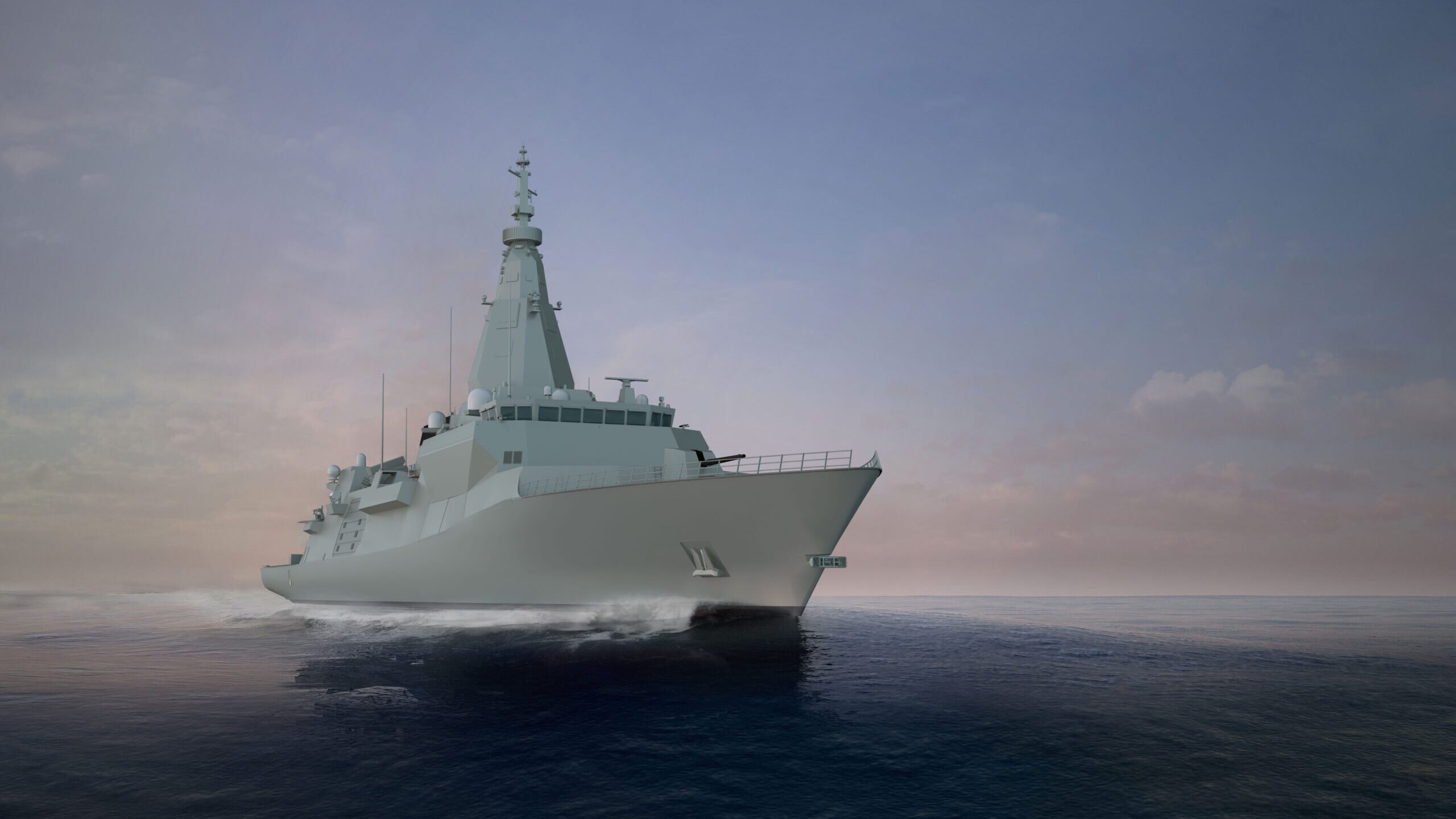
A rendering of the Canadian Surface Combatant. (Image provided by Lockheed Martin.)
Updated 10/21/2022 at 2:15 pm ET with a new clarification from Lockheed regarding its offering.
EURONAVAL 2022 — Lockheed Martin is planning to complete the preliminary design review for the Canadian Surface Combatant by the end of this year, a significant milestone for a shipbuilding program responsible for recapitalizing a large portion the Canadian surface fleet, a company executive told Breaking Defense.
Canada selected Lockheed’s design in February 2019 and plans to purchase 15 ships for roughly $55 to $60 billion CAD ($40.1 to $43.8 billion USD), according to the government’s website outlining the shipbuilding program. The vessel, which must be capable of a range of missions from anti-submarine warfare to humanitarian assistance, replaces the Iroquois-class destroyers and Halifax-class frigates.
Glenn Copeland, general manager of rotary and mission systems for Lockheed’s Canada branch, said the delay between selection and the design review reflects the program’s importance for the Royal Canadian Navy.
“Canada doesn’t have the luxury of having three different platforms, but they’ve committed to 15 ships. So they’re taking the time to get this right,” he told a group of reporters on Wednesday at the Euronaval 2022 exhibition.
More from Euronaval: Saab demos autonomous ‘Enforcer-3’ in joint trials with Swedish Navy
The preliminary design review is significant because it begins to finalize the “holistic structure” of the ship, Copeland said.
The PDR defines “what space, weight and power requirements are based on the systems that you’ve chosen,” Copeland said. “You’ve basically accepted the fact that you selected certain suppliers with still some uncertainties inside there, but that the design is largely picked based on the sub-systems that you selected.”
Getting the design correct upfront on the CSC program is important for Canada because the new vessel will represent the majority of the country’s Navy’s surface power, and the program already is being heavily scrutinized for cost and schedule domestically.
Lockheed’s proposed ship design is based on BAE’s Systems Type 26 Global Combat Ship. Canada’s Irving Shipbuilding, the CSC’s prime contractor, awarded Lockheed a design sub-contract in February 2019, according to the Canadian government’s website.
Copeland said that while Canada had very specific requirements for its new ship, the focus on anti-submarine warfare guided the initial design choices.
“One of the first requirements you have to look at is that Canada asked for a very quiet platform,” he said, adding that some features that would reduce a ship’s noise signature are not necessarily included on all ship designs. “At the same time it’s going to have to be an anti-air warfare platform.”
Based on the requirements from Canada, the company also included the Aegis Weapons System, the SPY-7 radar and CMS 330, a derivative of the combat system used on Canada’s Halifax-class, as part of the offering.
The first CSC is scheduled to be delivered, tested and ready for operations, in the early 2030s.






















